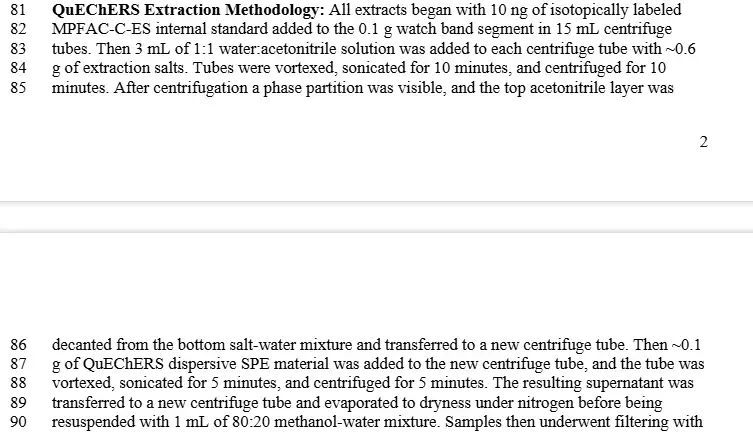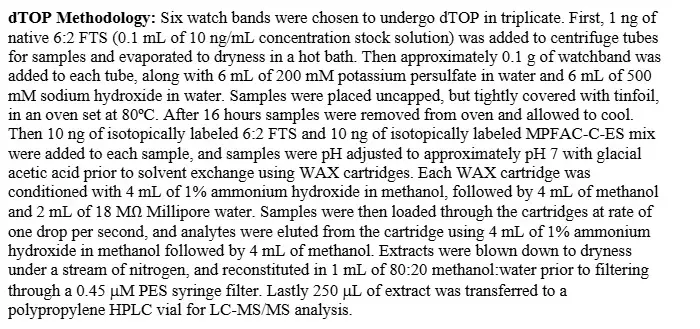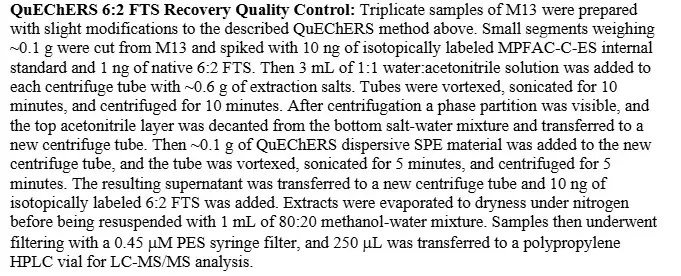The science has been provided.
I'm going to stop you right here- probably not to any valuable effect, but I'm going to do it anyway. "Science" is the process by which we come up with a hypothesis and test something, and then test it again, and again, and again, through a process of refinement to see if we can come up with a theory (theory: a well supported and tested idea of how something works)
The hypothesis in this study is essentially "do watchbands made of fluoroelastomer contain PFA"
The experiment you are citing- the one the article you shared cited- used solvents to extract PFAs from the watchbands so that the amount could be measured. One of the ways in which the sample was tested was QuEChERS, in which the sample is "homogenized" and then exposed to a solvent.
Here's how it works.
And here's how the study says they did it:
The study also used another method of specifically extracting PFAs:
(both screenshots from the study your article provided)
Unless you are dissolving your watchband and then putting it directly on your skin, you're not going to get the same results.
So what does the science say? It says that these chemicals are
present. That's not the same thing as assessing the risk when the product is worn normally, and the next step in the
scientific process would be to test for that in a way that is reflective of reality.



